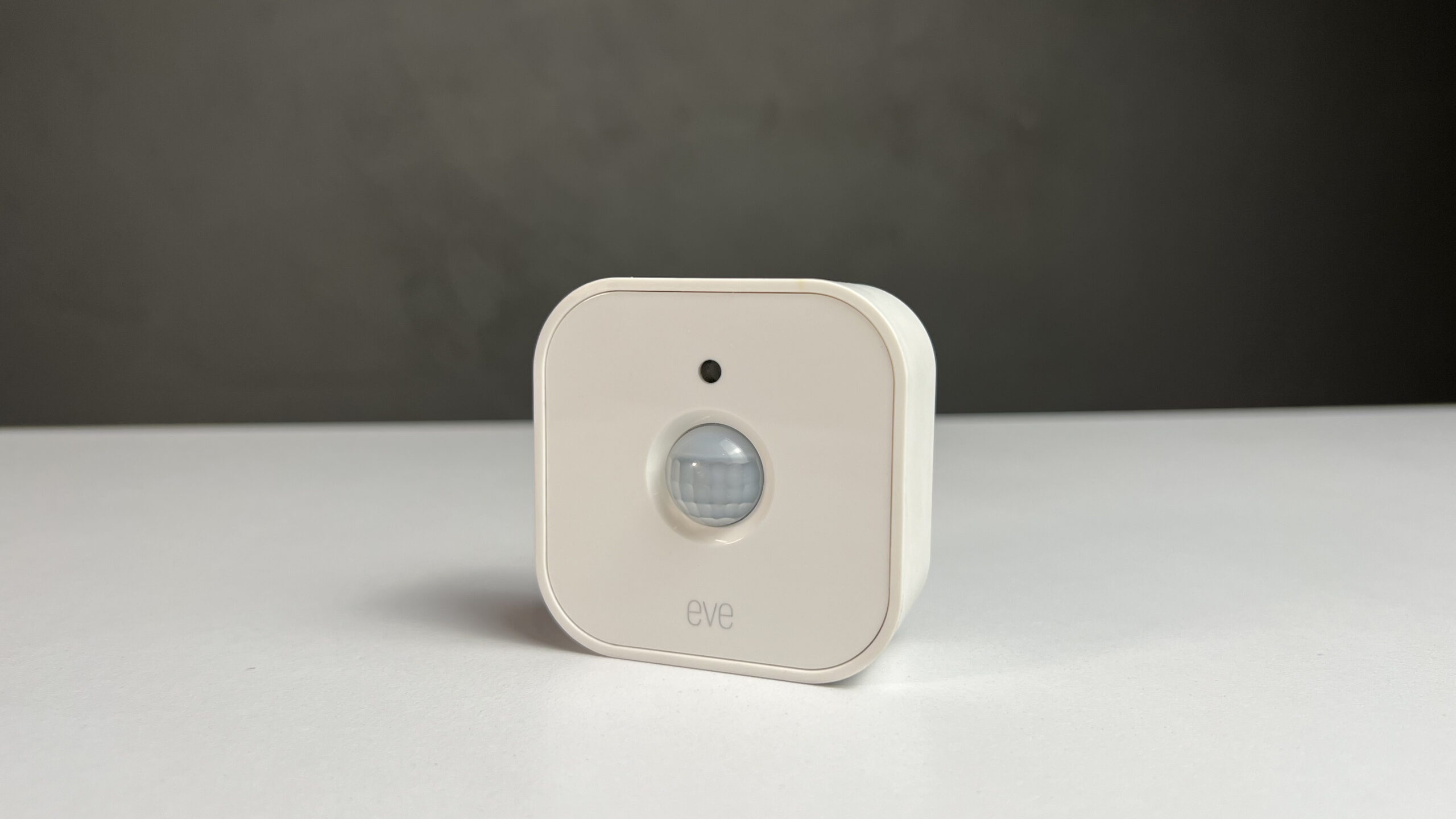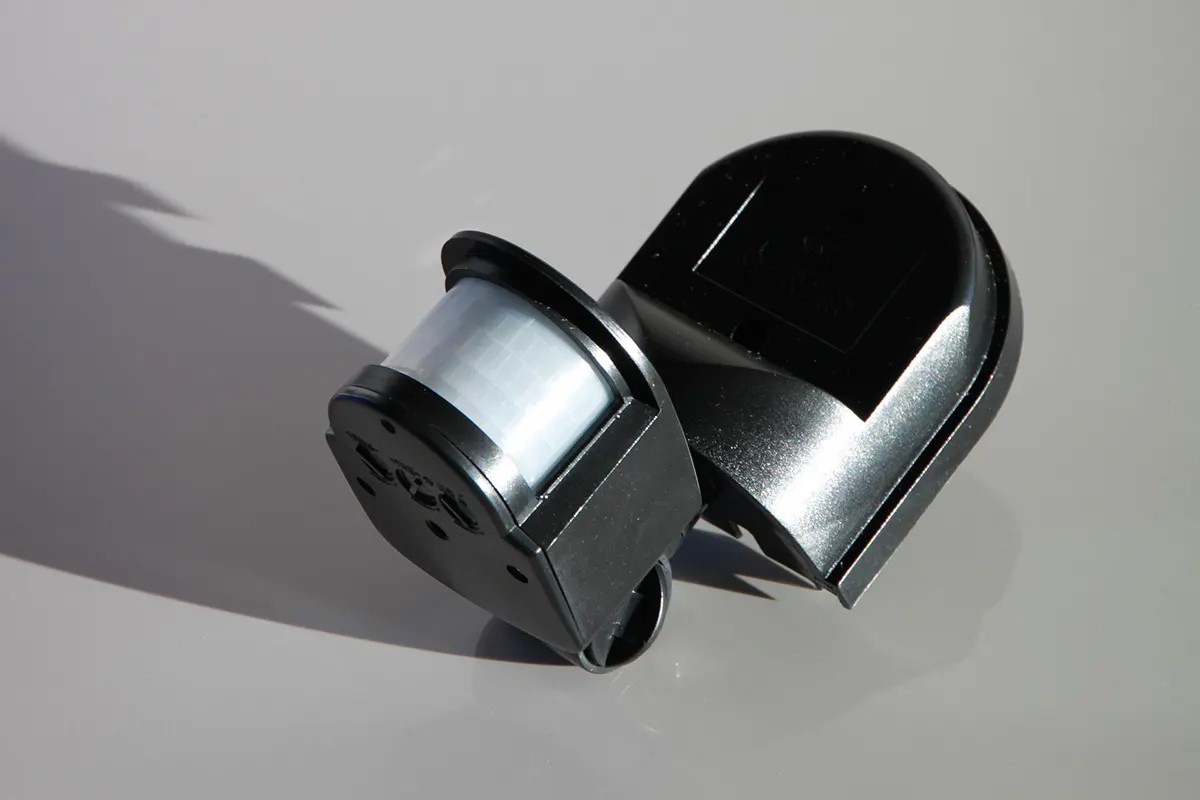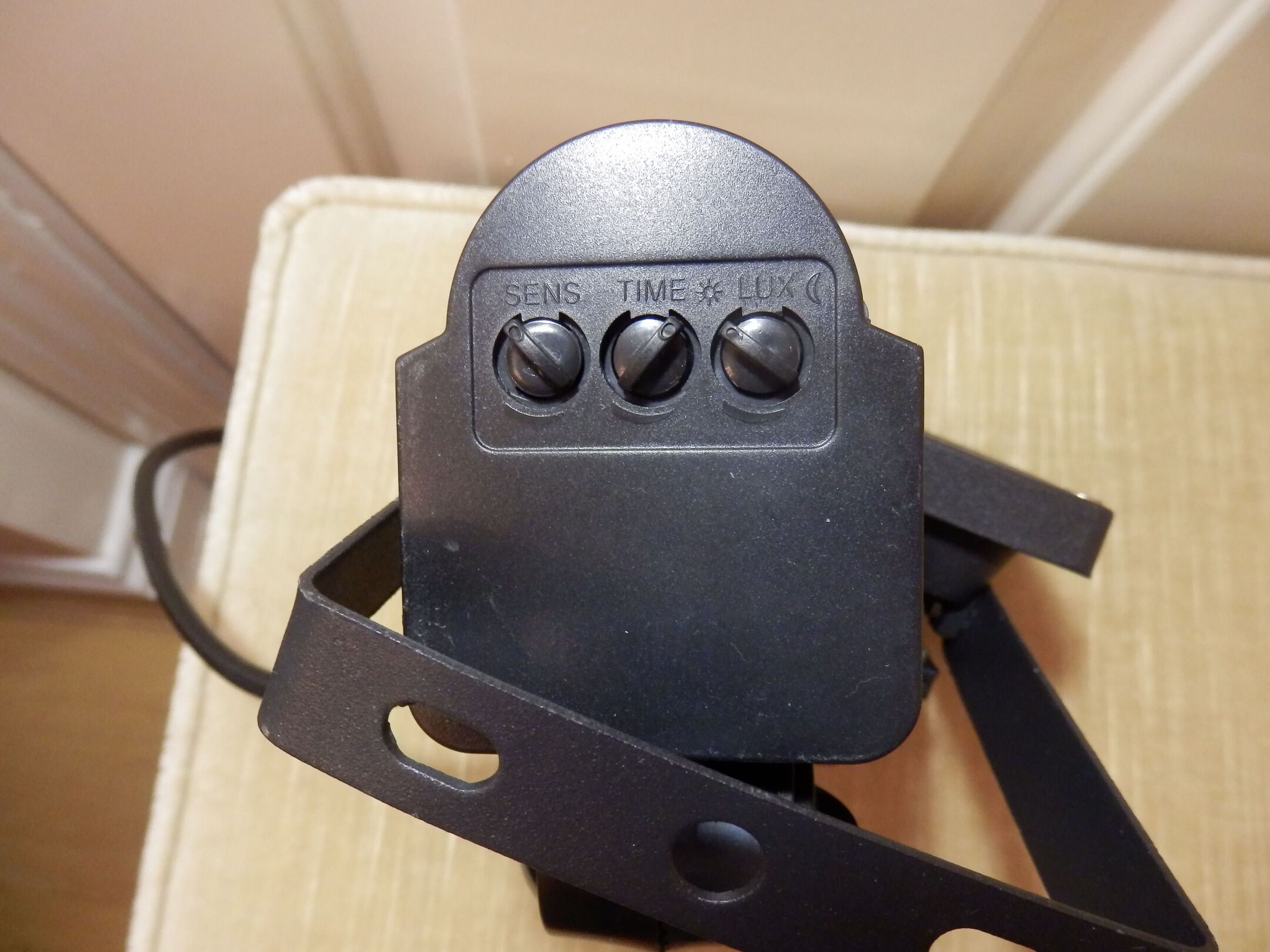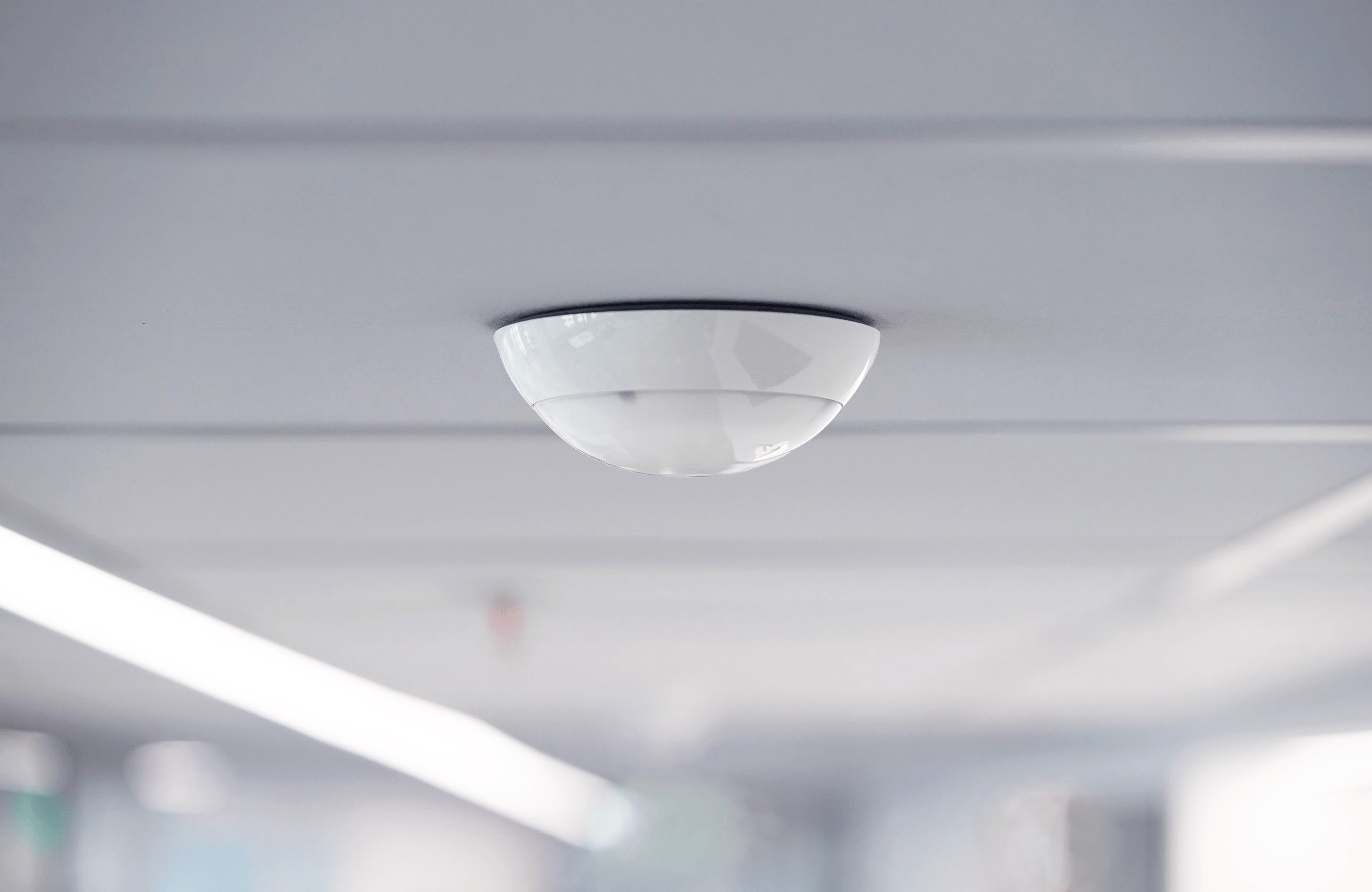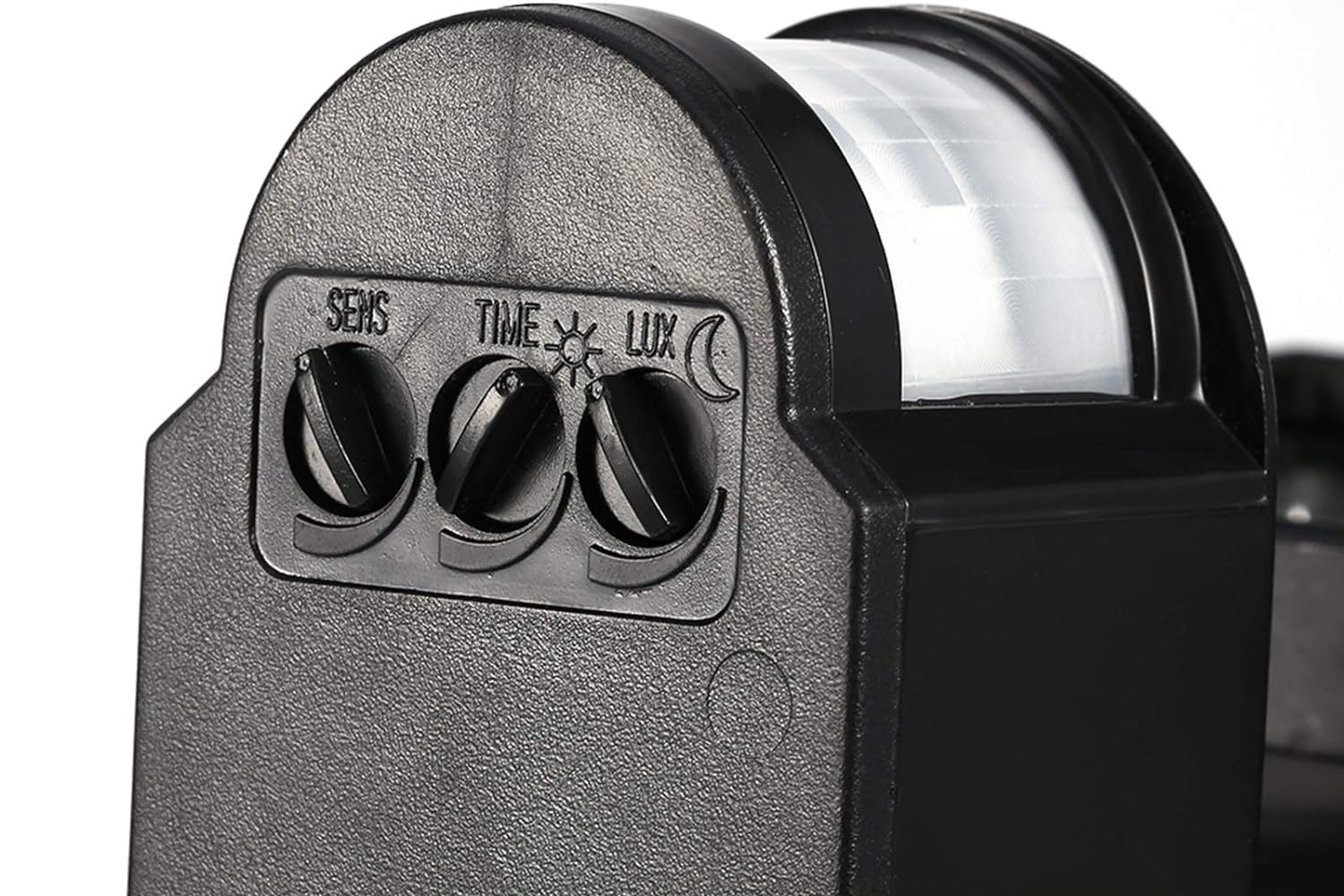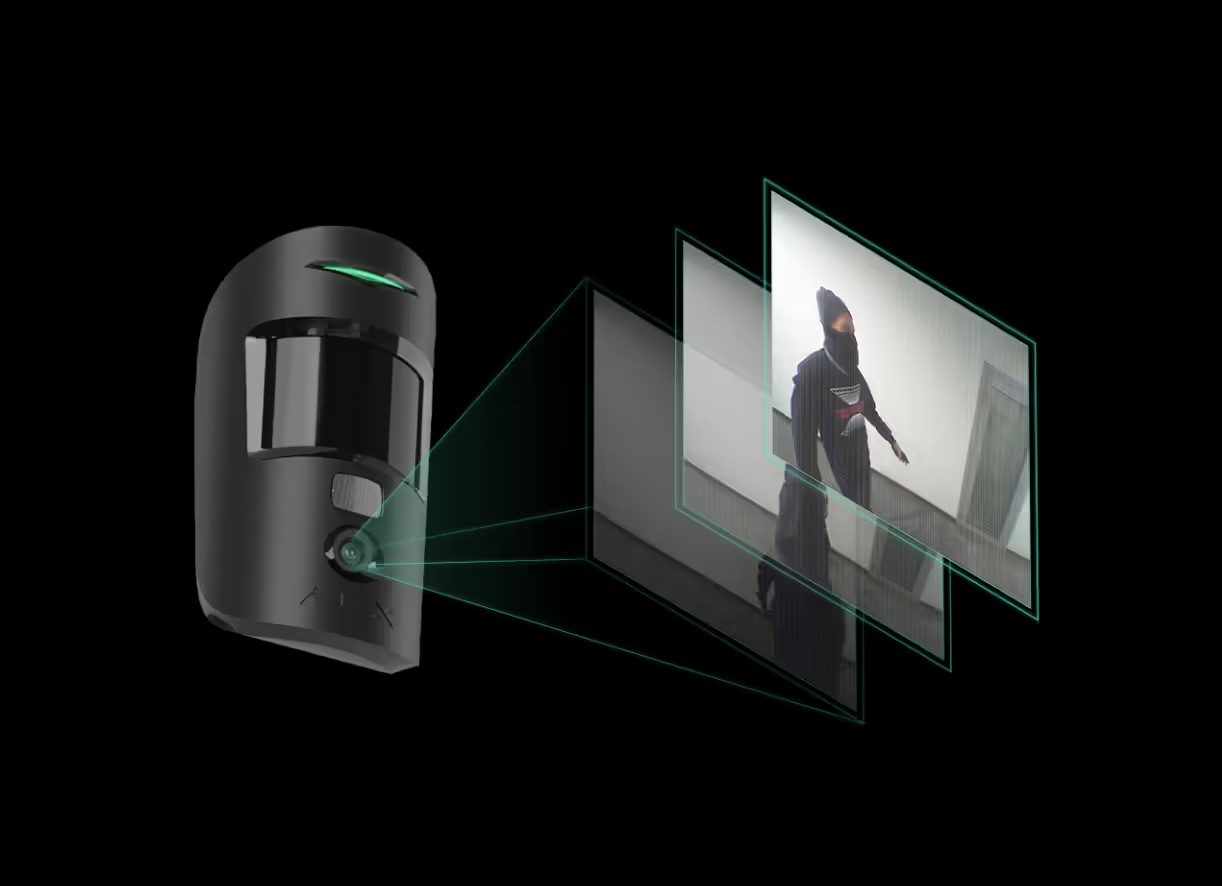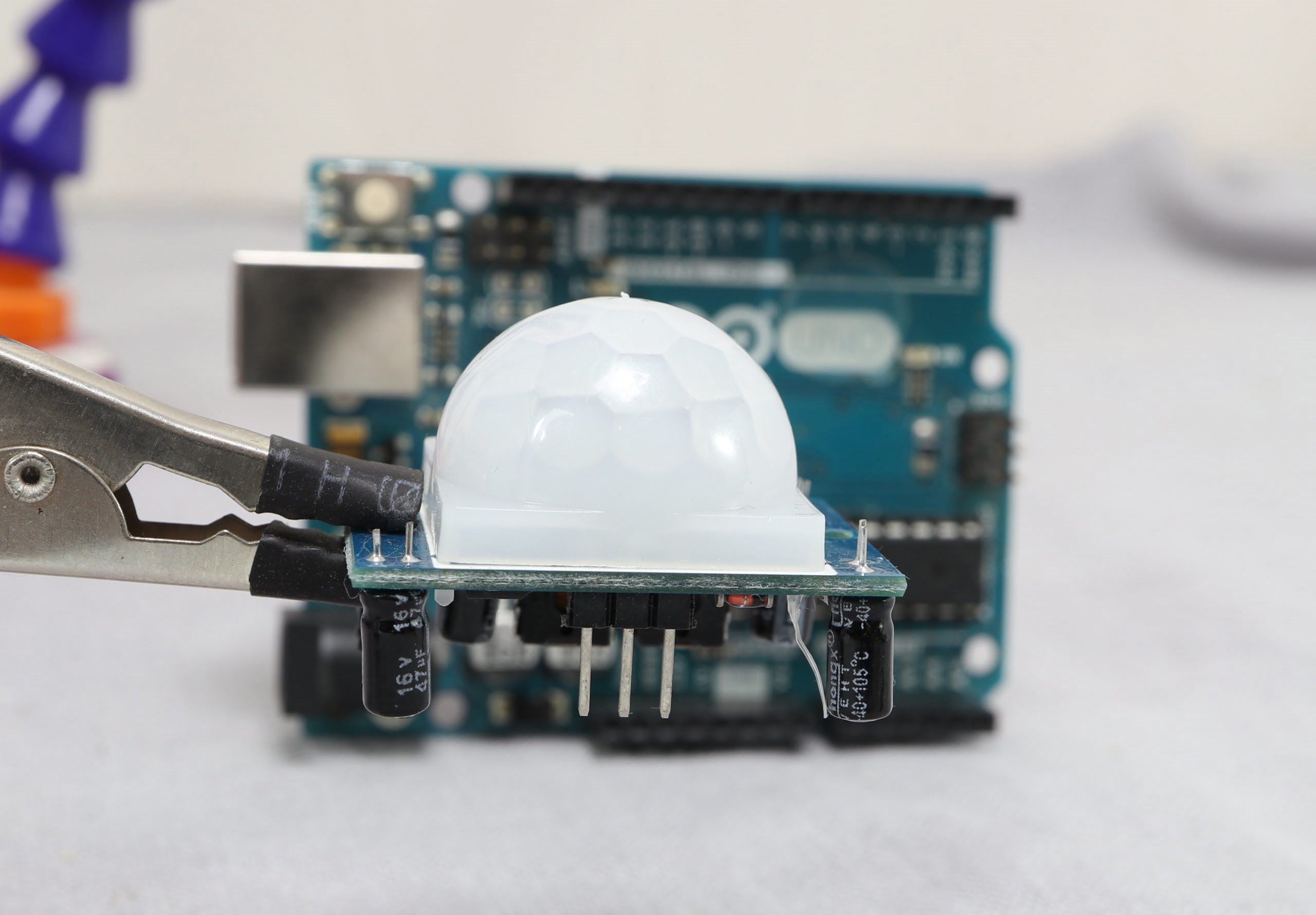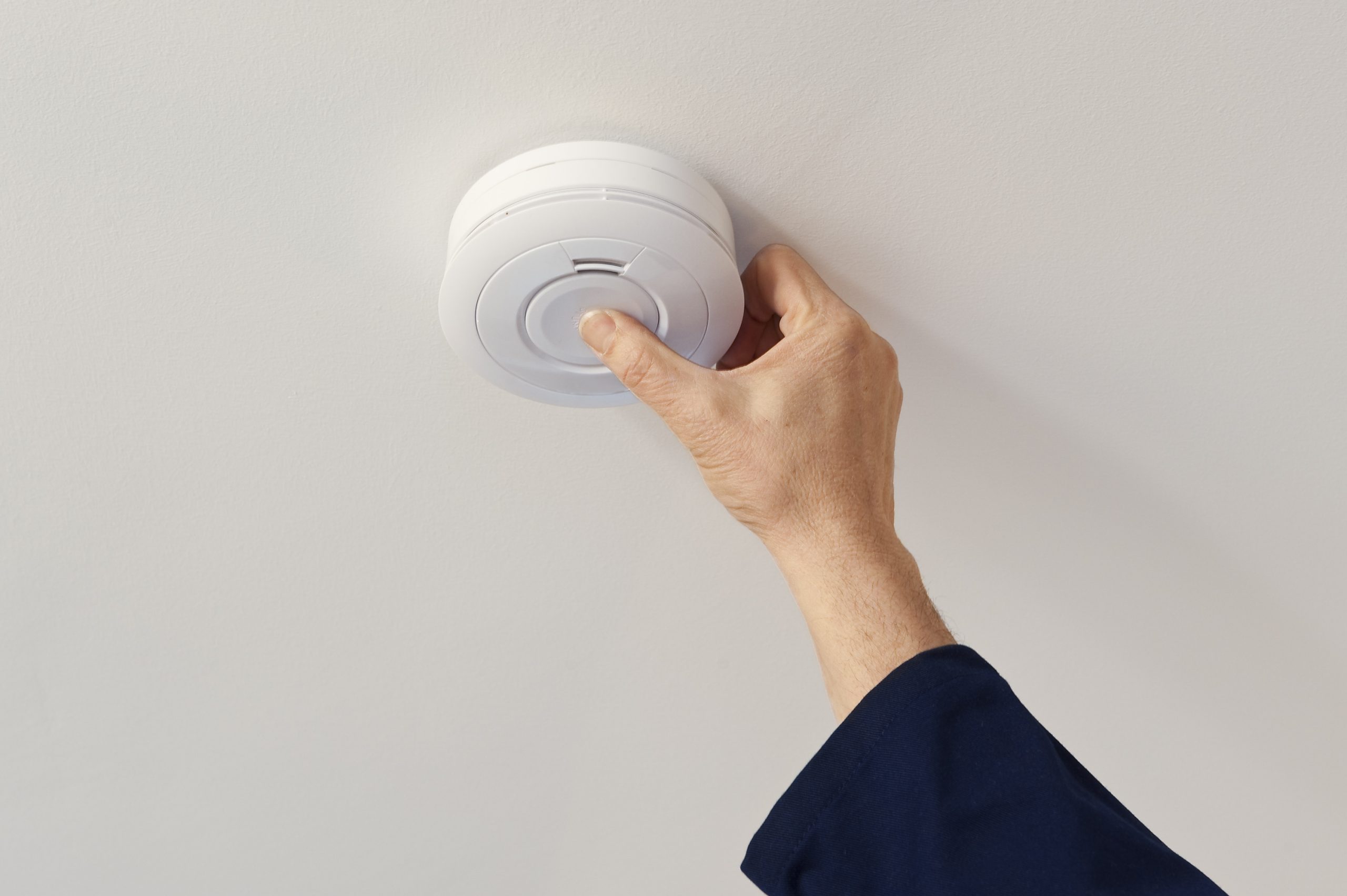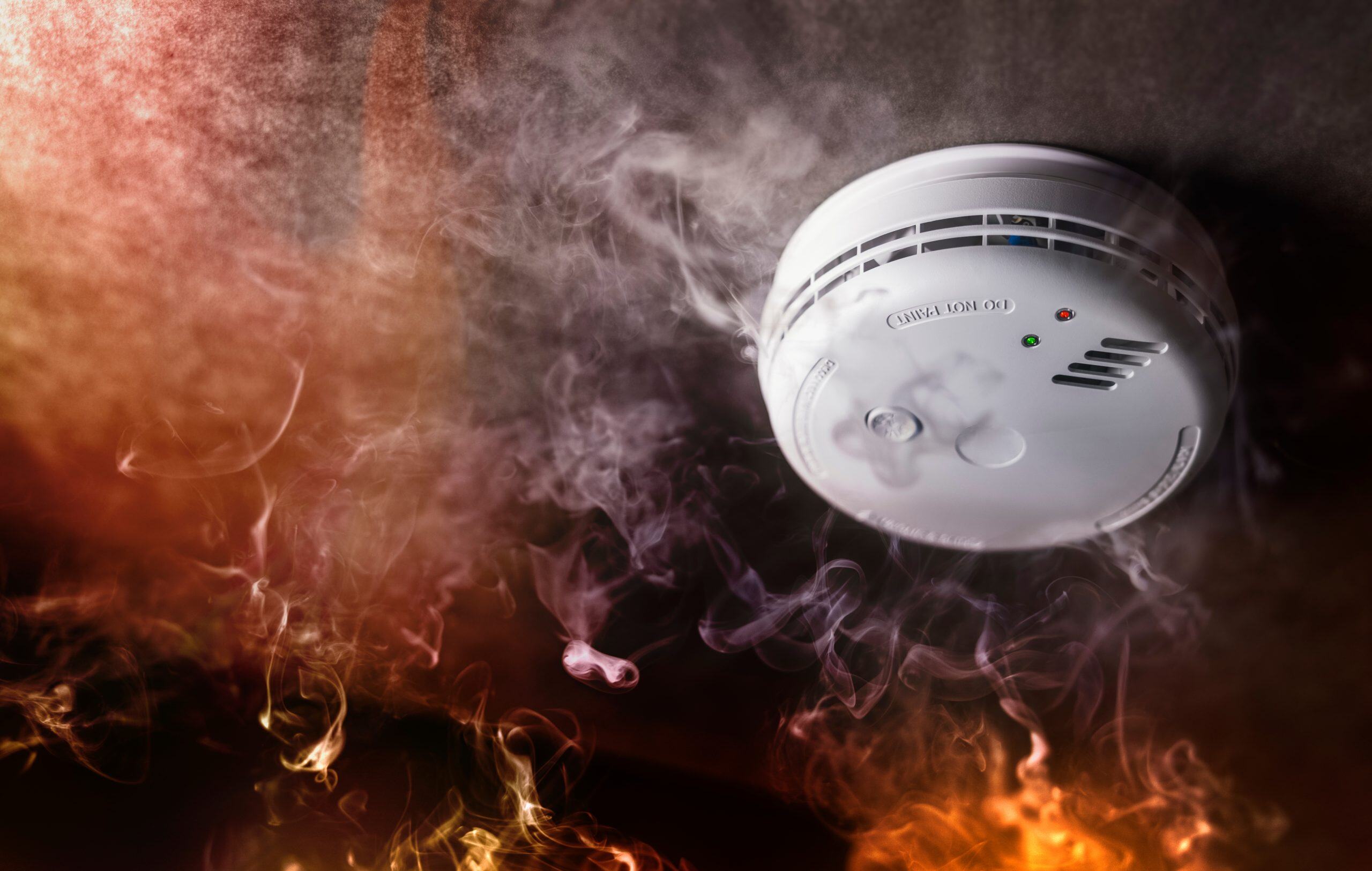Home>Home Security and Surveillance>What Does Motion Detector Do
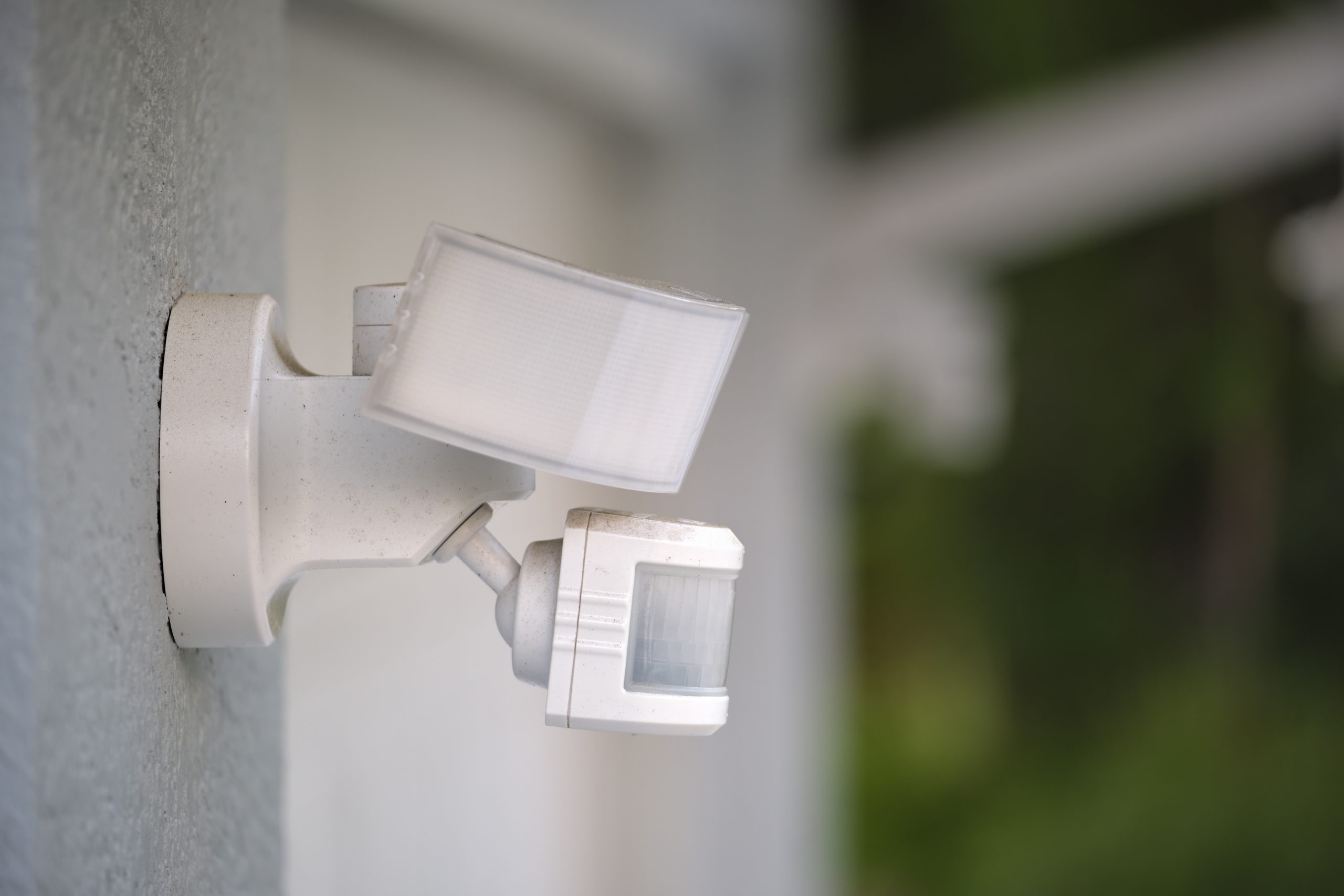

Home Security and Surveillance
What Does Motion Detector Do
Modified: November 1, 2024
Find out how motion detectors enhance home security and surveillance. Learn how these devices work and their benefits in keeping your property safe.
(Many of the links in this article redirect to a specific reviewed product. Your purchase of these products through affiliate links helps to generate commission for Storables.com, at no extra cost. Learn more)
Introduction
When it comes to keeping our homes and loved ones safe, home security and surveillance systems play a crucial role. One important component of these systems is a motion detector. But what exactly does a motion detector do, and why is it so important?
A motion detector, also known as a motion sensor or motion-activated sensor, is a device that is designed to detect movement within its designated area of coverage. It is an integral part of a home security system as it can alert homeowners or authorities of potential intruders or unauthorized activity.
Motion detectors have become increasingly popular in recent years, thanks to advancements in technology and the increasing need for home security. They are used not only in residential properties but also in commercial buildings, offices, and public spaces.
In this article, we will delve deeper into the world of motion detectors, exploring their definition, how they work, the different types available, common applications, as well as their benefits and drawbacks. Additionally, we will provide some tips for proper placement, maintenance, and troubleshooting.
So, let’s dive in and unravel the mysteries behind this important piece of home security technology.
Key Takeaways:
- Motion detectors are devices that detect movement in a specific area, alerting homeowners to potential intruders or unauthorized activity. They can be integrated with security systems for added protection.
- Motion detectors offer enhanced security, convenience, and energy savings by automatically controlling lighting, appliances, and providing early warnings of potential threats. Regular maintenance and proper placement are essential for optimal performance.
Read more: What Does An Infrared Motion Detector Do?
Definition of a Motion Detector
A motion detector is a device that is designed to detect movement within a given area. It uses various technologies such as infrared, microwave, or ultrasonic sensors to identify changes in the environment and trigger a response when motion is detected.
These devices are typically connected to a home security system, where they can be integrated with other components such as cameras, alarms, or automated lighting systems. When a motion detector senses movement, it sends a signal to the security system, which can then activate an alarm, send a notification to the homeowner’s smartphone, or initiate a recording on a surveillance camera.
Motion detectors can be either wired or wireless, giving homeowners the option to choose the most suitable setup for their needs. Wired motion detectors are connected directly to the security system through a physical wire, while wireless motion detectors communicate through radio frequencies or Wi-Fi.
With advancements in technology, motion detectors have become more sophisticated and accurate. They now come with features like adjustable sensitivity levels, pet immunity, and the ability to differentiate between human movement and other types of motion.
Overall, the main purpose of a motion detector is to provide an additional layer of security by detecting and alerting homeowners to any unauthorized or suspicious activity in and around their property.
How Motion Detectors Work
Motion detectors utilize different technologies to detect movement within their range. Here’s a breakdown of how some of the common types of motion detectors work:
- Infrared (PIR) Motion Detectors: These detectors work by detecting changes in heat signatures within their field of view. PIR motion detectors contain a sensor that can detect infrared radiation emitted by humans and animals. When a warm object, such as a person, moves within the detection area, the PIR sensor detects the change in heat and triggers the alarm or activates other actions.
- Microwave Motion Detectors: Microwave motion detectors emit continuous electromagnetic waves and then analyze the patterns of those waves as they bounce back. When an object moves within the detection area, it interrupts the microwave signals, causing a shift in frequency that is detected by the sensor. Microwave detectors are highly sensitive and can detect movement through walls and other obstacles.
- Ultrasonic Motion Detectors: Ultrasonic motion detectors emit high-frequency sound waves and then detect the changes in the reflected sound waves. These detectors work on the principle of echo location, similar to how bats navigate in the dark. When an object moves within the detection area, it causes a change in the received sound waves, triggering the detector to activate.
- Dual Technology Motion Detectors: Some motion detectors combine two or more technologies for increased accuracy and decreased false alarms. For example, a common combination is the use of both infrared and microwave sensors. Both sensors must be triggered simultaneously to validate the presence of motion and reduce false alarms caused by environmental factors.
Once motion is detected, the motion detector sends a signal to the connected security system. This signal can initiate various actions, such as sounding an alarm, activating surveillance cameras or lights, or sending notifications to the homeowner’s mobile device.
It’s important to note that motion detectors can be adjusted for sensitivity and range to suit different environments. This allows homeowners to customize the detection capabilities based on their specific needs.
By understanding how motion detectors work, homeowners can make informed decisions when selecting the type of motion detector that best suits their home security requirements.
Types of Motion Detectors
There are several types of motion detectors available on the market, each utilizing different technologies to detect movement. Here are some of the most common types:
- Passive Infrared (PIR) Motion Detectors: PIR motion detectors are one of the most widely used types. These detectors detect changes in heat patterns and infrared radiation within their field of view. They are effective at detecting human and animal movement and are commonly used in residential and commercial settings.
- Microwave Motion Detectors: Microwave motion detectors emit continuous microwave signals and analyze the patterns as they bounce back. They are sensitive to any movement within their detection range and are ideal for outdoor areas where there may be a lot of false alarms from animals or environmental factors.
- Ultrasonic Motion Detectors: Ultrasonic motion detectors emit high-frequency sound waves and detect the changes in the reflected sound waves. They are effective in detecting movement even through barriers such as doors or walls. However, they can be affected by obstacles and air currents.
- Dual Technology Motion Detectors: Dual technology motion detectors combine the benefits of multiple sensor technologies, such as infrared and microwave or infrared and ultrasonic. By requiring both sensors to be triggered simultaneously, these detectors minimize false alarms and increase detection accuracy.
- Outdoor Motion Detectors: Outdoor motion detectors are specifically designed to withstand outdoor conditions such as rain, wind, and temperature changes. They are typically more robust and have a longer detection range compared to indoor motion detectors.
- Pet-Immune Motion Detectors: Pet-immune motion detectors are designed to ignore the movement of small animals, reducing false alarms caused by pets. These detectors use advanced algorithms to differentiate between the size and movement patterns of pets and potential intruders.
When selecting a motion detector, it’s important to consider factors such as the size of the area to be covered, the presence of pets, and the specific security needs of your home or property. Consulting with a security professional can help you determine the most suitable type of motion detector for your requirements.
Common Applications of Motion Detectors
Motion detectors have a wide range of applications and can be used in various settings to enhance security and convenience. Here are some common applications of motion detectors:
- Home Security Systems: Motion detectors are a crucial component of home security systems. They can be installed both indoors and outdoors to detect any unauthorized movement around the property. When integrated with an alarm system, motion detectors can trigger an alarm and alert homeowners or security personnel of potential intruders.
- Outdoor Lighting: Motion detectors are often used to control outdoor lighting. When someone approaches the property, the motion detector senses the movement and automatically turns on the lights. This provides enhanced visibility and can deter potential intruders.
- Energy Efficiency: Motion detectors can be used to conserve energy by automatically turning off lights and appliances when no motion is detected in a room. This is particularly useful in areas like bathrooms, hallways, and garages where lights are often left on unintentionally.
- Automatic Doors: Many public buildings and establishments use motion detectors to control automatic doors. When someone approaches the entrance, the motion detector activates the mechanism to open the door, providing a convenient and touchless entry experience.
- Surveillance Systems: Motion detectors are frequently used in conjunction with surveillance cameras. When motion is detected, the motion detector can trigger the camera to start recording, ensuring that any suspicious activity is captured and documented for review.
- Smart Home Automation: Motion detectors can be integrated into smart home automation systems, allowing homeowners to create personalized and automated routines. For example, when motion is detected in the living room, the system can automatically adjust the temperature, turn on the TV, and play the homeowner’s favorite playlist.
These are just a few examples of how motion detectors can be utilized in various applications. Their versatility and functionality make them an essential tool for enhancing security, convenience, and energy efficiency in both residential and commercial spaces.
Motion detectors are devices that can sense movement in a specific area. They are commonly used for security systems to detect intruders, but can also be used for turning on lights or triggering alarms.
Read more: What Does Threshold Mean In Motion Detector
Benefits and Advantages of Using Motion Detectors
Motion detectors offer several benefits and advantages when it comes to home security and convenience. Here are some key reasons why using motion detectors can be beneficial:
- Enhanced Security: One of the primary benefits of motion detectors is their ability to enhance security. By detecting motion in and around your property, they act as an early warning system, alerting you to potential intruders or unauthorized activity. This can help deter burglars and provide you with peace of mind.
- Reduced False Alarms: Modern motion detectors are designed to minimize false alarms caused by pets, insects, or other environmental factors. They can be programmed to ignore certain movements or filter out false triggers, ensuring that you receive accurate alerts when actual threats are present.
- Convenience and Energy Savings: Motion detectors can make your daily life more convenient and help save energy. By automatically turning on lights when someone enters a room and turning them off when the room is empty, motion detectors eliminate the need for manual control and reduce unnecessary energy consumption.
- Remote Monitoring and Control: Many motion detectors are integrated with smart home technology, allowing you to remotely monitor and control your security system. You can receive notifications on your smartphone when motion is detected, view live camera footage, and even arm or disarm your security system from anywhere in the world.
- Customizable Detection Settings: Motion detectors offer customizable detection settings, allowing you to adjust the sensitivity, range, and behavior of the device to suit your specific needs. This flexibility ensures that the motion detector works effectively in different environments and minimizes false alarms.
- Integration with Other Security Devices: Motion detectors can be seamlessly integrated with other security devices such as surveillance cameras, alarms, and access control systems. This integration creates a comprehensive security solution, providing multiple layers of protection for your home or business.
By utilizing motion detectors, you can significantly enhance your security measures, improve convenience, and save energy. Whether you’re looking to protect your loved ones or secure your property, motion detectors are a valuable tool that can make a significant difference in your overall security setup.
Potential Drawbacks of Motion Detectors
While motion detectors offer numerous benefits, it’s important to consider their potential drawbacks as well. Here are some common drawbacks to keep in mind:
- False Alarms: Despite advancements in technology, motion detectors can still be prone to false alarms. Factors such as moving objects like curtains, pets, or changes in environmental conditions can trigger false detections. This can lead to unnecessary disruptions and may require additional time and effort to investigate.
- Blind Spots: Motion detectors have specific areas of coverage, and there may be limitations in their field of view. This can result in blind spots where movement may not be detected. Intruders can potentially bypass these blind spots, compromising the effectiveness of the motion detector as a security measure.
- Interference: Certain environmental factors can interfere with the proper functioning of motion detectors. For example, strong electromagnetic signals or radio waves from other devices can cause false triggers or disrupt the motion detector’s performance. It’s crucial to ensure proper placement and consider any potential sources of interference.
- Pet Immunity Limitations: While pet-immune motion detectors are designed to ignore the movement of small pets, there can still be limitations. Large or highly active pets may still trigger the motion detector, potentially leading to false alarms. It’s important to consider the size, behavior, and movement patterns of your pets when choosing a motion detector.
- Installation and Placement: Proper installation and placement of motion detectors are essential for optimal performance. Mounting the device at the wrong height, incorrect angle, or in an area with excessive vibration can impact its effectiveness. It may require professional installation or careful consideration to ensure proper functionality.
- Privacy Concerns: Some individuals may have concerns about their privacy when installing motion detectors, especially if the detectors are integrated with cameras or other surveillance devices. It’s important to be transparent with occupants and visitors about the use of motion detectors and follow applicable privacy laws and regulations.
While these drawbacks should be considered, it’s important to note that many of these issues can be mitigated through proper installation, calibration, and regular maintenance of the motion detector system. It’s always recommended to consult with security professionals to ensure that you select the most suitable motion detector and address any potential challenges specific to your environment.
Tips for Proper Placement of Motion Detectors
Proper placement of motion detectors is key to ensuring their optimal performance and effectiveness. Here are some tips to consider when placing motion detectors:
- Height and Angle: Mount the motion detector at a height that is appropriate for the area you want to monitor. Typically, a height of 6 to 8 feet above the ground is recommended. Make sure the detector is tilted downward at a slight angle to cover the desired area effectively.
- Avoid Obstructions: Ensure that there are no obstacles blocking the path of the motion detector’s sensors. Objects such as curtains, furniture, or plants can cause false alarms or prevent the detector from detecting movement accurately.
- Multiple Detectors: For larger areas or rooms with odd shapes, consider using multiple motion detectors to cover the entire area effectively. This helps reduce blind spots and increases the overall coverage and detection accuracy.
- Placement Near Entry Points: Install motion detectors near entry points such as doors and windows to detect any unauthorized access. This helps provide an extra layer of security and acts as an early warning system for potential intruders.
- Consider Range and Sensitivity: Adjust the range and sensitivity settings of the motion detector based on the specific area it is monitoring. For outdoor motion detectors, take into account the range needed to cover the outdoor space while minimizing false alarms caused by animals or passing vehicles.
- Test and Adjust: After installation, thoroughly test the motion detector by walking through the monitored area to ensure its effectiveness. Make any necessary adjustments to the position, angle, or sensitivity settings based on the results of the test.
- Avoid Heat Sources: Keep motion detectors away from direct heat sources such as heaters or vents. Excessive heat can affect their performance and may lead to false alarms or inaccurate detection.
- Regular Maintenance: Maintain the cleanliness of the motion detector lenses to prevent dust, dirt, or debris from obstructing the sensors. Additionally, periodically check the power source, batteries (if applicable), and ensure that the device is functioning properly.
Following these tips will help ensure that your motion detectors are properly positioned and calibrated, maximizing their effectiveness in detecting and alerting you to any unauthorized movement in your home or property.
Maintenance and Troubleshooting of Motion Detectors
Motion detectors, like any other electronic devices, require regular maintenance to ensure their optimal performance. Additionally, in case of any issues or malfunctions, knowing how to troubleshoot motion detectors can save you time and potentially unnecessary expenses. Here are some maintenance and troubleshooting tips for motion detectors:
- Regular Inspection: Conduct routine inspections of your motion detectors to check for any physical damage, loose connections, or signs of wear and tear. Replace any damaged or corroded parts to maintain proper functionality.
- Clean the Lenses: Keep the lenses of the motion detectors clean and free from dust, dirt, or any obstruction. Use a soft cloth or duster to gently clean the lenses to avoid scratching or damaging them.
- Check Power Source: Ensure that the motion detector is receiving adequate power. For wired detectors, check the wiring connections and make sure they are secure. For battery-operated detectors, replace the batteries regularly or as needed.
- Adjust Sensitivity Settings: If you notice frequent false alarms or missed detections, you may need to adjust the sensitivity settings of the motion detector. Refer to the manufacturer’s instructions on how to modify the sensitivity levels based on your specific requirements.
- Verify Range and Coverage: Periodically test the detection range and coverage of the motion detectors to ensure that they are monitoring the desired areas effectively. Adjust the mounting position or angle if necessary to achieve optimal coverage.
- Check for Interference: Environmental factors such as nearby electrical devices, strong radio waves, or other wireless signals can potentially interfere with the motion detector’s operation. Identify and eliminate or relocate any possible sources of interference.
- Update Firmware: If your motion detector is connected to a smart home security system, check for firmware updates for both the detector and the system. Keeping the firmware up to date can resolve any potential bugs or compatibility issues.
- Consult the Manufacturer: If you encounter persistent issues or are unsure about how to solve a problem with your motion detectors, reach out to the manufacturer’s customer support or consult a professional technician who is familiar with the specific model.
By performing regular maintenance and troubleshooting tasks, you can ensure that your motion detectors are functioning properly, providing reliable detection, and enhancing the overall security of your home or property.
Read more: What Is A Vernier Motion Detector
Conclusion
Motion detectors are an integral part of modern home security and surveillance systems. They offer numerous benefits and play a crucial role in keeping our homes and loved ones safe. Understanding how motion detectors work, the different types available, and their common applications can help you make informed decisions when it comes to enhancing the security of your property.
Whether you’re looking for an added layer of security, energy efficiency, or convenience, motion detectors can be a valuable asset. They provide enhanced security by alerting you to potential intruders or unauthorized activity. They also offer convenience by automatically controlling lighting and appliances, saving energy in the process.
While motion detectors have many advantages, it’s important to acknowledge their potential drawbacks, including false alarms and limitations in detection range or coverage. However, with proper placement, maintenance, and troubleshooting, you can mitigate these issues and ensure optimal performance.
When installing motion detectors, consider consulting with security professionals to determine the most suitable type and placement for your specific needs. They can guide you through the process, customize the settings, and provide expert advice to maximize the effectiveness of your motion detector system.
In conclusion, motion detectors serve as an essential component of a comprehensive home security and surveillance system. By investing in these devices and following the tips mentioned in this article, you can significantly enhance the safety and security of your home and enjoy the peace of mind that comes with knowing you have an added layer of protection.
Frequently Asked Questions about What Does Motion Detector Do
Was this page helpful?
At Storables.com, we guarantee accurate and reliable information. Our content, validated by Expert Board Contributors, is crafted following stringent Editorial Policies. We're committed to providing you with well-researched, expert-backed insights for all your informational needs.
